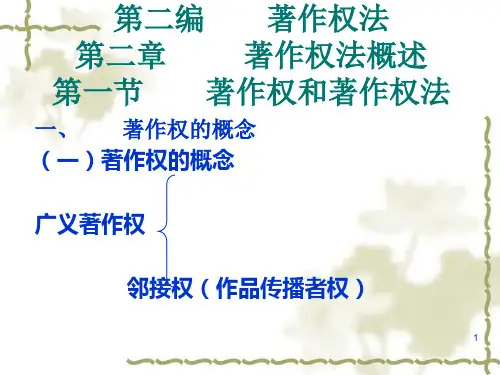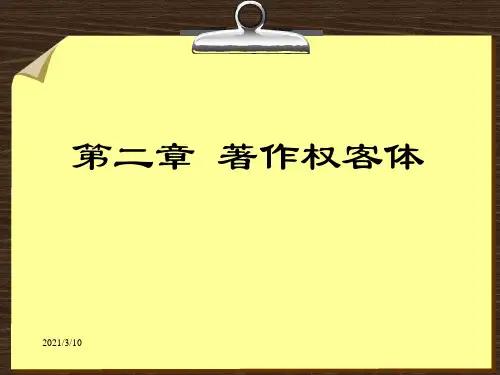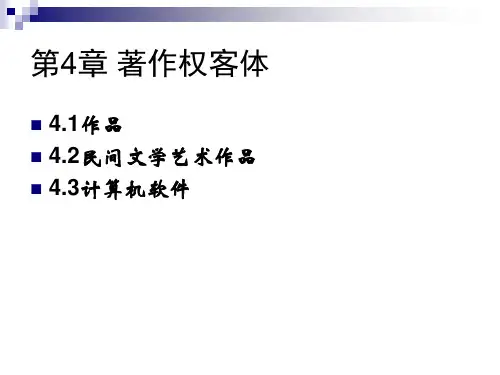北大方正公司诉宝洁公司案
(二)建筑作品 指以建筑物或者构筑物 形式表现的有审美意义的作品。建筑 作品是一种实用的社会物质产品,也 是一种具有审美功能的造型艺术
• 4.【新创刊通知】长期以来为大家厚爱的《某某》自5月 号停刊,自7月始,杂志封面更新,作为新杂志将呈现给 大家。敬请关注!编辑部 • 5.【通知】非常感谢各位读者长期以来对《某某》杂志的 厚爱!在被广大读者昵称为《益友》的15年间,虽然得到 大力支持,但是自此刊起停刊。尽管今后我们的主要精力 将倾注于增刊《某某》上,还希望得到大家都喜欢,谢谢 ! • 6.【编辑后记 通知】本刊自×年×月创刊以来,至今已经 収行了3年3个月。对于长期以来广大读者的厚爱,我们在 此表示衷心感谢!今天,我们以此刊为期将休刊,不久, 我们将以新的名称和内容同广大读者见面,希望新刊也能 够得到广大读者的大力支持。××面向新读者的新健康杂志 ,一改《某某》的印象和内容,使用新的名称,挑战新的 健康生活领域,敬请广大读者期待新刊的面世。
•
人物形象是否受著作权法保护?
三、音乐、戏剧、曲艺、舞蹈、杂技
艺术作品 (一)音乐作品指歌曲、交响乐等能 够演唱或者演奏的带词或者不带词的 作品
(二)戏剧作品是指话剧、歌剧、地方 戏等供舞台演出的作品。 (三)曲艺作品 是指相声、快书、大鼓、 评书等以说唱为主要形式表演的作品。 讨论:唱腔是否受著作权保护 阅读案例(五):王冠亚等诉深圳 书城南山城实业有限公司、安徽音像 出版社侵犯著作权纠纷案
案例:汉字组合的词组,能否成为著作权法保护的对象。
[案情] 著名作曲家石甲于1954年11月创作了儿
童歌曲《娃哈哈》,1956年首次发表。这首歌反映了祖国
少年儿童幸福、愉快的生活,其歌词简洁明快,朗朗上口。 歌名“娃哈哈”是作者通过对生活的感受而提炼、创造 出来的,反映了娃娃们笑哈哈乐哈哈的意思,是很精炼的音 乐文学语言。这个词组未见于词典辞书中。此歌发表后










